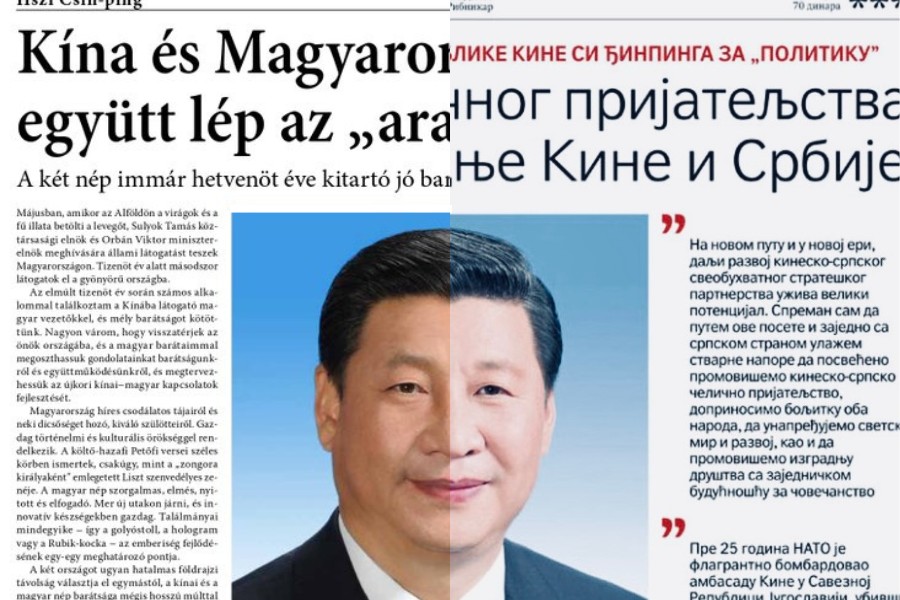
Photo: Pexels, Pavel Danilyuk
“Journalism can never be silent: that is its greatest virtue and its greatest fault.”
Henry Anatole Grunwald
This beautiful and oh-so-true quote of the American journalist and diplomat Henry Grunwald spotlights the enormity of responsibility and risks inherent to the journalists’ profession. Regardless whether it is about the moments of tremendous joy or those of desperation and tragedy, journalism remains the guardian of key historical moments, even when many prefer to forget or simply fail to see. If such role is assigned to the journalists’ profession in a society, then it means that this role is important by the same token as other democratic institutions in the modern world. As a result, the protection of journalists becomes an issue of protecting fundamental values of any democratic community.
Consequently, in Serbia too, due to the worrisome number of attacks on journalists, the topic of journalists’ safety gained exceptional importance in the recent period. As a response, first the Standing Working Group for Journalists’ Safety (SWG) was established in January 2017, and then the Government’s Working Group for Journalists’ Safety (GWG) was set up in the end of 2020. Next, the Ombudsman’s platform for documenting the attacks and pressures made on journalists was created in the course of 2021. Additionally, the new Media Strategy which devoted an entire chapter to the safety of journalists and their socio-economic status significantly contributed to these efforts.
Those who are closely following these processes know that many projects and activities were implemented within this framework and that a number of results were achieved. For example, a System of Contact Points for rapid response in case of attack on journalists was established so that, at present, as many as 115 persecutors are night and day available to the journalists who believe that they are victims in a criminal offense. At first, there were four of them. Then the Safe Journalists website (bezbedninovinari.rs) was launched, and then followed the SOS phone line for journalists to receive free advice from lawyers. Many different studies and analysis were made on this topic, training was implemented for police and prosecution, and a lot of other things as well. It seems, however, that the announced amendments to the Criminal Code, which are supposed to facilitate a more efficient and a more comprehensive protection of journalists, stirred up most interest in general public, and rightfully so.
Despite this increased interest, however, it seems that media community has many misgivings with regard to these amendments. This is primarily because of the absence of clear and direct answers, both about the reasons why all this is happening, and about the reach of the solutions that are now on the table.
Amendments to the Criminal Code – those related to journalists’ safety – were formulated by a professor of criminal law Zoran Stojanović, at the initiative and with the support of the OSCE Mission to Serbia and the SWG. They were created in response to the events with regard to which the existing criminal-law framework has proven to be powerless, as shown by multiyear experience of journalists and media associations, prosecution and police working together. This powerlessness of the legal system was often perceived by journalists as the feebleness of prosecutors and the police, and the latter frequently attributed it to journalists and media not knowing the Law.
That is how all those events when a person insulted or abused journalists, or threatened them in a way which was previously unrecognised by the Law, all those harassments via social networks – in short, everything which reasonably creates a feeling of apprehension in journalists, became criminal offenses
Following the consultations with journalists’ and media associations, amendments were completed in April of current year, and then they were submitted, first to the SWG, and then also to the GWG. After the preliminary consideration of this document, it was decided that a working group for the amendments to the Criminal Law should be set up within the Ministry of Justice and that the amendments relating to journalists’ safety should be placed under accelerated procedure, partly because they were in the same package with all other amendments which need to be adopted by the end of 2022. At the GWG’s last meeting, which took place on 30 September, the Ministry of Justice informed the WG members that the amendments have been officially and fully accepted and thus have become an integral part of the Draft Law on amendments to the Criminal Code which will be presented for public discussion. In the meantime, the online public discussion started on 07 October, and will subsist for next 20 days.
That which raises most interest in the journalistic community, though, is the content of these amendments, namely what improvements exactly can be expected should they be adopted.
Before that happens, however, it should be highlighted that, contrary to the wide-spread opinion, the intensification and spread of criminal-law repression in itself does not result in the effective suppression of crime in any area and, naturally, neither in the journalists’ safety area. According to what professor Stojanović said, “it does exactly the opposite; as a rule, it weakens the criminal-law system and also has some broader negative consequences on the society”. That is exactly why the ultimate goal of drafting the amendments was to strike the right balance between the justified need to put in place a more effective criminal-law protection of journalists, and the fear of the overuse of repression when it is not necessary (ultima ratio principle, or criminal law as the last resort).
The solution which was justifiably adopted was not to introduce a new criminal offense against journalists as it was proposed at one time, but to, following the spirit of our Law, specify in detail and further expand the criminal zones in the three offenses that already exist: “Coercion”, “Threatening the safety” and “Preventing the printing and dissemination of printed matter and the broadcasting of programmes”. In order to maintain the consistency of the Law, it was correctly assessed that we should not embark on the road of amendments which would bring to the front the protection of journalists as such, but rather the protection of a specific value – in this case, the freedom of expression and media freedom. That is the reason why the proposed amendments concern the part of the Law captioned “Criminal Offenses against Man and the Citizen”.
Amendment to the criminal offence “Coercion”
This criminal offense is perpetrated when a person, using force or threats, makes another person do or not do something. It is punishable by imprisonment of up to 3 years.
But now, according to the new amendments, in case anyone coerce a journalist to do something (like give them the computer login password so as to delete the text the journalist prepared) or not to do something (not to publish a text the journalist has written), a stricter punishment is envisaged – between 6 months and 5 years of prison.
Essentially, this criminal offense could have always been committed against journalists but now a harsher punishment has been introduced in the event this happens. Previously, the maximum punishment was three years in prison, and according to the new amendments it will be five. To put it shortly, penal policy regarding this criminal offense has been rendered harsher.
Amendments to the criminal offense of “Threatening the safety”
Amendments to this criminal offense are very interesting considering that its implementation caused many challenges in practice. Also, according to the data provided by the Republic Public Prosecutor’s Office, most criminal acts committed against journalists related to threatening their safety and that is exactly why, because of the heightened intensity and limited practical reach, it was necessary to modify this criminal offense.
To date this criminal offense would ensue if anyone threatens the journalist’s life or limb, or the life or limb of a person close to him (such as his wife or a child). Therefore, to date only the threats relating to the life or limb of a journalist or a person close to him have been deemed to constitute the perpetration of a criminal offense (e.g., “I will kill you“). No other threats were taken into account since they did not meet the requirements provided by law. Thus, for example, if somebody sent a journalist a message that they will set the journalist’s house on fire, until now this could not have been deemed to be a threat to his safety. In consequence, the police and prosecutors could not take action ex officio. This may sound brutal, but that is the way it is from the formal-legal perspective, which is the only criterion valid in court. Any indictment served by the prosecution to that effect would have been doomed to failure.
In addition to the threats to life and limb, the announced amendments include further two bases – threats to freedom or to a high-value property. Therefore, the amendments would actually broaden the scope of options and events which the law enforcement bodies would consider to be the case of threatening the journalist’s safety. Should these amendments be adopted, police and prosecution would definitely consider the above-mentioned threat (“to set the house on fire” as well as many others) to be a threat to safety.
There is no doubt that these amendments will broaden the criminal zone of this criminal offense, namely the entire spectre of potential events in which journalists’ safety may be threatened. This will ensure – as was one of the objectives of these amendments – a more comprehensive protection of journalists’ safety.
It is also important to highlight that the threatened safety of a journalist is manifested in the journalist’s feelings of insecurity and vulnerability, or fear. Such subjective feelings of the journalist would therefore be enough for this criminal offense to exist, it is not necessary that his safety is objectively threatened. This means that, if a person threatens the journalist ‘with an empty gun’ and the journalist does not know that ‘the gun is not loaded’, it will be sufficient for this criminal offense to be deemed perpetrated even though, from the formal-legal perspective, his safety was not threatened objectively.
Amendments to the criminal offense of “Preventing the printing and dissemination of printed matter and the broadcasting of programmes”
Even though the above two criminal offenses are critically important for the improvement of journalists’ safety, it seems that amendments to this criminal offense should bring about a breakthrough in overcoming of what might be the most serious challenges. This is about what is called pressure, or, more precisely, all those situations which create an objective feeling of insecurity in journalists but lack the intensity required for them to be considered as threatening the safety or being any other criminal offense.
It is important to note that the above-mentioned pressure is just the key, although not the only, reason for the discrepancy between the journalists associations’ and the prosecution’s databases of assaults. For example, in 2020 the prosecution registered 56 criminal cases of assaults on journalists, while NUNS registered the total of 189 incidents, out of which as many as 82 were related to pressures on journalists. These events do not constitute physical assaults, verbal threats, nor attacks on or threats to property (as categorised by NUNS) and, for this reason, police and prosecution did not bother with such cases – they are not deemed to be criminal offenses. However, if the new amendments are adopted, that will no longer be the case.
This powerlessness of the legal system was often perceived by journalists as the feebleness of prosecutors and the police, and the latter frequently attributed it to journalists and media not knowing the Law.
Namely, the amendments to this Article introduce two new ways in which this criminal offense may be perpetrated. First, this criminal offense will be perpetrated if anyone prevents or obstructs a journalist to publish information. Second, it will be deemed that this criminal offense is perpetrated if anyone, because of information or opinion that were already published, insults or abuses a journalist, or, by behaving in an insolent or inconsiderate manner, threatens the journalist’s peace of mind.
So, that is how all those events when a person insulted or abused journalists, or threatened them in a way which was previously unrecognised by the Law, all those harassments via social networks – in short, everything which reasonably creates a feeling of apprehension in journalists, became criminal offenses. The introduction of this, almost completely new criminal offense, will fill up the gaps which the criminal offense of threatening the safety did not cover before.
But, that is not all. It was proposed that, when it is perpetrated by an official (including, inter alia, persons employed in public authorities), this criminal offense should be punishable by prison of up to three years. Another important novelty, which was introduced at the justifiable request of journalists’ and media associations, is that, for this criminal offense, prosecution and police are to initiate criminal prosecution ex officio, rather than upon a proposal of the journalist as the injured party, which have been creating huge burden on the journalists in the previous period.
Conclusion
All who were included in this process sincerely believe that the proposed amendments will significantly improve the safety of journalists. The former Criminal Code left too much space for anyone wishing to harm or intimidate journalists to do that and not be punished. And this is exactly what is the greatest contribution of these amendments: that space will shrink considerably and prosecution and police will have legal grounds to act in many situations in which ‘their hands were tied’ previously.
Finally, it is necessary to highlight that journalists’ safety is not protected solely by criminal law. There are many other channels which a society may use to respond to this challenge as recommended to the participating states in the 2018 OSCE Ministerial Council’s Decision on Safety of Journalists. For example, public officials will publicly and unambiguously condemn any attacks on journalists, whether men or women; or, law enforcement bodies will be able to conduct investigation in a faster, more effective and less biased manner, while courts will pronounce sentences as provided by law and thus enhance their deterrent function. Moreover, through regular implementation of training about journalists’ safety for government bodies and public authorities, and the improvement of assault data collection and assessment, politicians and public officials will be provided means to abstain from intimidating or threatening the journalists, or tolerating violence against them. In addition, the use of unlawful or arbitrary surveillance of journalists’ activities and communications should be prevented, and journalists themselves must report assaults more than before.
On the other hand, all this is certainly not a simple task. Continual professional engagement and earnest commitment by all parties is required. However, as we managed to learn from this lengthy process of amending the Criminal Code – there is nothing that cannot be done when you have serious and well-founded legal arguments. A difficult journey is in front of us and nobody can say what expects us beyond the horizon line drawn by the Criminal Code amendments. But we certainly know that only what happens in real life will reveal the results of this process. The OSCE Mission will definitely continue to be a committed, reliable and sincere ally to all stakeholders travelling this road towards a better environment for journalistic work and still further enhanced democratic standards in Serbia.
Since its inception, the OSCE Mission to Serbia has been working in close partnership with all stakeholders in Serbia by providing advice, assistance and expertise in its mandated areas: democratization, rule of law and human rights, media and the security sector, that are key for the country’s reforms and democratic development.
* The author is the OSCE Mission to Serbia’s legal advisor for media freedom and is involved in functioning of both the Government’s Working Group for the Safety of Journalists and the Standing Working Group for the Safety of Journalists.



 Silovanje ili cenzura: Na šta to smrdi Pepe le Tvor?
Silovanje ili cenzura: Na šta to smrdi Pepe le Tvor? Deset medijskih sporazuma za „zajedničku budućnost” sa Kinom, zemljom cenzure i progona novinara
Deset medijskih sporazuma za „zajedničku budućnost” sa Kinom, zemljom cenzure i progona novinara Saragusti: Niko sada nije bezbedan. Zločini su jezivi. Novinari su ubijeni dok obavljaju svoj posao
Saragusti: Niko sada nije bezbedan. Zločini su jezivi. Novinari su ubijeni dok obavljaju svoj posao
Ostavljanje komentara je privremeno obustavljeno iz tehničkih razloga. Hvala na razumevanju.